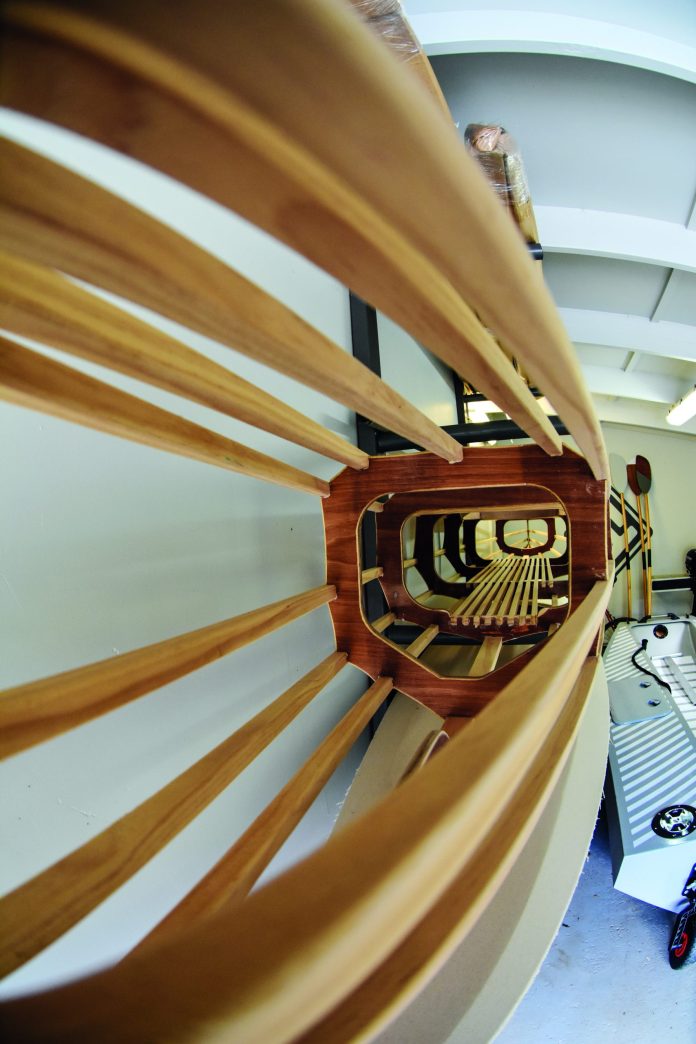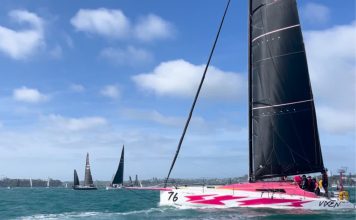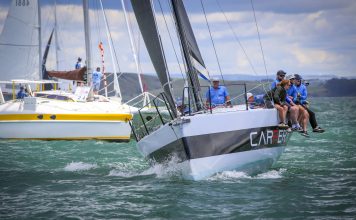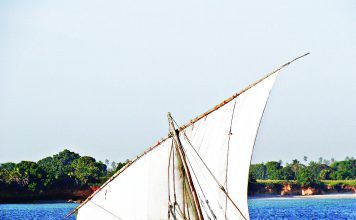Most owners accept the importance of protecting their pride and joy from damage caused when tying up to docks, wharves and other boats. Norman Holtzhausen finds out there’s more to the humble fender than meets the eye.
The air-filled fender is by far the most popular type of protection for boats. Generally comprising a soft but very tough, PVC cylindrical container, it is filled with air and usually has a rope eye on either end.
Typically, it’s not pumped hard but has a certain amount of ‘give’ to allow a little external pressure. This spreads the force over a wider surface area of the side of the boat – a hardpumped fender would concentrate that pressure on a smaller spot and possibly cause damage.
High-end fenders, such as those used on superyachts, often have a nylon or other cloth covering to prevent rub marks on the gelcoat. At the other end of the market, heavy-duty industrial fenders such as those used by tugboats and larger vessels may be made of black rubber or PVC where extreme strength is more important than appearance.

Other common types of fenders include solid pieces of closed cell foam like EVA or Ultralon. These are often flat or square in profile. They don’t ‘roll’ like a tubular design but may be less effective if the boat is moving around a fair bit. Once again it is actually the air (trapped in bubbles in the foam) which provides the cushioning, with the rubber merely containing the air while it does its magic.
Choosing a fender is relatively simple – it’s all about size and quantity. Most marine chandlers have a guide to what size fenders best match the size of a boat. Buy at least three fenders (many chandlers sell them in a pack of three, as well as individually). A few extra won’t go amiss as long as you have somewhere convenient to store them on board. At least two different sizes are also a good idea, since rafting against another boat requires a mixture of sizes.

The first thing to note is that the fender should not hang over the rubbing rail that runs around most boats. This could create a ‘pinch’ point on the fender when it gets caught between this narrow strip and the other object, causing it to burst. If your rubbing rail is at the exact same height as the dock then a large spherical (rather than cylindrical) fender may be a better option.
Make sure the fenders have a diameter at least three times the width of the rubbing rail, and hang them just below the rail so the protruding fender makes contact with the wharf rather than the rail. Also tie the fenders as low down on the deck as possible, and with the shortest practical length of rope. If they are tied to the top of the rail with a long piece of rope, the movement of the boat could cause them to swing out the way and allow the boat to contact the dock directly.
Finally, make sure they are tied to a sturdy mounting point, since the movement of the boat and dock can pinch the fender and put a fair amount of strain on the rope. If you have stanchions or deck cleats, these are good places for attaching the fender. Alternatively, you could fit custom fender hooks.

When tying alongside a wharf, hang at least three fenders – one fore, one aft and one at the widest beam of the boat. Usually these would be three similar-sized fenders, although the middle fender will normally take the most force so it should be the most robust one.
Fenders hang down vertically, so only one end of the fender has a rope attached, and gravity helps the fender stay in place as the boat moves relative to the dock. Of course, if you have more fenders make use of them – there is no such thing as too many fenders.
When rafting alongside another boat you want at least five fenders – three standard size ones relatively close together around the maximum beam of the boat, and much wider fenders fore and aft.
These fore and aft units are often big round buoys, rather than tubular fenders, as these usually have a large diameter and work better under the flare of the bow.
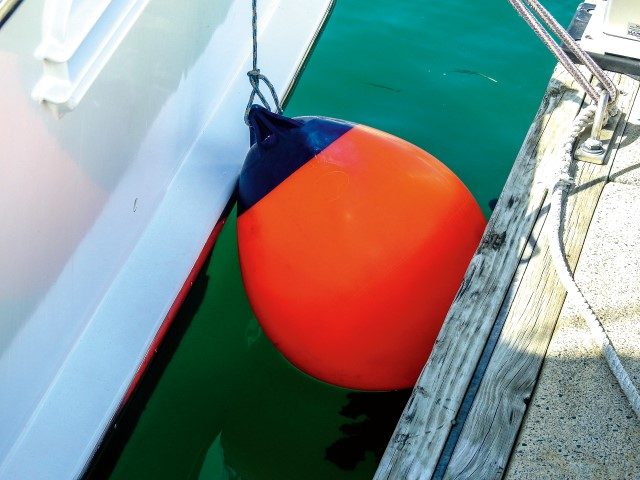
About the only time a fender is hung horizontally is when tying up to a wharf with a pile or pole. Here the other end of the rope is tied to the bottom of the fender and it can then be looped around the pole. Alternatively, a second rope can be used, and the fender strung between two points on the boat. This lets the fender roll up and down the pole, keeping the boat safe without being pushed to one side.
The best knot for attaching a fender depends on what it is going to be tied to. For attaching to a cleat, a standard figure-eight will do the job, while a clove-hitch is best suited to tying onto a stanchion. And for those who are knotchallenged, there are several types of boat fender hooks and clips that take all the guesswork out of tying and adjusting the length of the fender’s rope.
BUFFERS
Buffers are similar to fenders but they’re usually attached to a dock or wharf permanently. As such they generally have a strip or flap along one edge to use when attaching with screws or bolts, and also come in angled versions for fitting around corners.
Buffers are generally filled with closed-cell foam because these require no maintenance, although some inflatable versions are available. High-usage vessels, like commercial dive charters, sometimes install fenders along the boarding platform of their vessels to prevent damage from the marina berth or when customers bump dive tanks against the hull.
So, if you don’t have at least three fenders on board (or five if you have the space to store them) pop down to your favourite boat shop and get a set suited to the size of your boat. B
















